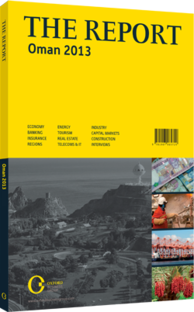Logistical needs: A commitment to improve infrastructure nationwide
Recent years have seen a transformation in the logistics sector, with both quantity and quality undergoing major improvements. With several new airports under construction or expansion, along with some major developments in seaports, roads and in the future, railways, the sector is poised to reap the rewards from past investments and take a further step towards realising its potential as regional and global logistics hub.
Local Improvements
Many in the sector will remark that only a decade ago, the logistics sector in Oman was a shadow of its present form. Indeed, calculations based on a 2004 McKinsey report suggested that back then, logistics was still widely considered an in-house affair, with 90% of all logistics and supply chain operations dealt with in this fashion – as opposed to 20-30% in Europe. Seen as simply a transportation cost, the sector often lacked a systematic and professional approach, with the competitive value of logistics in bringing goods more efficiently to market overlooked.
The transport network in Oman continues to overcome various historical barriers to the smooth flow of goods and people within its territory. Heavy trucks were previously limited by weight restrictions on highways, while congestion around Muscat in particular was severe. Warehousing was often located in areas near to port, with a lack of refrigeration facilities also impacting the quality of goods delivered. A lack of regional airports also inhibited the delivery of perishable goods over long distances. Yet now, some in the sector say, the industry is a different place. “The infrastructure has improved hugely in the last few years,” Chris Clark, the country director of Oman for ASCO Middle East, told OBG. “Warehousing, highways, the whole attitude towards logistics has made a lot of progress.”
Organisation
ndicative of this are the Omani Logistics and Supply Chain Association and the Chartered Institute of Logistics and Transport, both set up in 2011-12. The sultanate is also the venue for Transoman, an annual industry gathering which actively promote best practices and Oman’s target of becoming a regional hub.
Around Muscat, the logistics trade has followed developments in the urban infrastructure, moving warehousing out of the old centres around Ruwi and towards the airport. Warehousing is also now much higher quality, with racked storage, computerised inventory and good climate control. Previous health and safety concerns are being more comprehensively addressed in these new facilities, while companies are also now exploring government permission for bonded warehouses away from the ports and airports.
Bottlenecks
The system of expressways has also solved the weight problems with the old roads, while the government’s continued expenditure on new road projects, including the Al Batinah Expressway to Dubai, have also eased transport congestion (see overview).
The bottleneck, however, is transport to the newly developing ports, such as Duqm, where roads are trying to catch up with accelerating port usage (see analysis). The Ministry of Transport and Communications (MOTC) is currently funding a 372-km road construction project to expand the existing link between Duqm to the town of Sinaw to overcome this.
Another major bottleneck in late 2012 was Customs posts for the slow crossing into the UAE, logistics insiders told OBG. This will be important if the planned Gulf railway comes to fruition (see analysis).
Muscat International Airport also faces logistical challenges as it continues to operate at overcapacity, until the new terminal becomes operational (see analysis). Nonetheless, the authorities have been expanding and improving the existing facilities, including recent new computer software for the cargo side.
Many Omani firms are working in the business, in spite of more international companies commencing operations locally. Although Warith Al Kharusi, the executive director and chairman of the Oman Logistics and Supply Chain Association noted that “the workforce needs to be skilled in order for the industry to remain sustainable and to drive growth.” Indeed, difficulties continue to persist in recruiting well-qualified local staff.
You have reached the limit of premium articles you can view for free.
Choose from the options below to purchase print or digital editions of our Reports. You can also purchase a website subscription giving you unlimited access to all of our Reports online for 12 months.
If you have already purchased this Report or have a website subscription, please login to continue.

